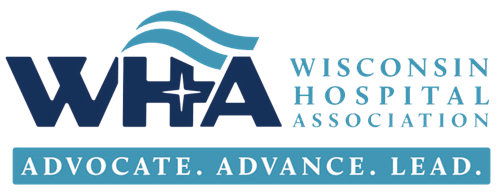While hospitals are challenged by rising labor and supply costs, the head of the Wisconsin Hospital Association says his “most fundamental concern” is attracting workers to the field.
In a legislative briefing this week, WHA President and CEO Eric Borgerding told lawmakers that creative solutions will be needed to shore up the health care workforce in the coming years.
“There’s a lot we can do in the public policy realm to improve our workforce, and we really need to work together to do that,” he said.
Ann Zenk, the association’s senior vice president of workforce and clinical practice, highlighted demographic trends that are straining Wisconsin’s labor market. The state’s over-65 population is expected to double by 2030, causing health care demand to rise by 30 percent. And as the state’s population ages, older health care professionals are expected to retire in droves, putting greater strain on a shrinking workforce.
“Our challenge is really compounded, and creates urgency for solutions,” Zenk said during the briefing.
She also spotlighted a “generational tipping point” in the health care workforce that will influence future efforts to bolster critical professions such as nursing. Millennials now make up the largest share of the labor pool for health care employers, she said.
“Baby boomers predominated the workforce for a long time,” she said. “That’s not true anymore. Now we have a multi-generational workforce … So we have to make sure, as hospital employers, that we appeal to that multi-generational workforce. That we best try to understand the needs of our workforce.”
Based on surveys and other information gathered by WHA, these younger workers prioritize “meaningful work,” having caring and trusted colleagues, good health, as well as a positive and safe work environment. Zenk argued the industry “can, and should, and must” meet those expectations.
“They’re not afraid to go somewhere else. They’re not afraid to seek opportunities where they can find them — good for them,” she said. “But that also means that we’re seeing a lot more turnover in health care jobs, and we have to make sure we can keep up with that turnover.”
The briefing also highlighted a number of recommendations from the group’s latest Wisconsin Health Care Workforce Report, such as removing barriers to “top-of-skill” practice for professionals, leveraging technology to offset the shrinking workforce, promoting health care as an “achievable and meaningful” profession, streamlining licensing and others.
“We have partnered successfully on a lot of things already, and there’s a lot more work to be done,” Zenk said.
Watch the full briefing: https://wiseye.org/2023/04/11/wha-state-of-the-health-care-workforce-legislative-briefing/
See WHA’s workforce report: https://www.wha.org/MediaRoom/DataandPublications/WHAReports/Workforce/2023
Listen to a recent podcast with Zenk: https://www.wisbusiness.com/2023/wisbusiness-the-podcast-with-ann-zenk-wisconsin-hospital-association/
–By Alex Moe






